Why American Muscle Might Outlive the Standard American Sedan

Domestic sedans are currently being walked up to the edge of a mass grave. Beneath them rests their two-doored brethren and the first wave of four-doors previously executed by the Big Three. Ford has promised a lineup comprised almost entirely of pickups and utility vehicles in the coming years and General Motors is in the process of doing the same. Fiat Chrysler wisely kept its automotive killing spree under the radar by being the first to pull the trigger and not making a big deal of it. But consider what’s left within its domestic nameplates: SUVs, pickups, a few vans and the endangered Chrysler 300 — which is really a more of a commoner’s luxury vehicle.
FCA also has the Dodge Charger and Challenger in its stable, but they’re not what one might consider when imagining your typical sedan. They’re ancient, powerful creatures. Gas-guzzling muscle cars, brimming with attitude, and seemingly impervious to harm. Goliaths without a David or fuel crisis to put them down. Who could have ever imagined that American muscle would crawl back out of its grave after such a long absence and manage to outlive the typical sedan?
Their manufacturer, for one.
According to Timothy Kuniskis, head of FCA’s Fiat and Jeep brands, it’s all because traditional sedans have nothing exciting to offer consumers.
“What’s dying is the commoditized, four-door nothingburger, no-personality cars,” Kuniskis, who ran the Dodge brand from 2013 to early 2018, told Bloomberg this week. He claims muscle cars “have a really well-defined personality and positioning.”
Considering long-legged success stories like the Toyota Camry and Honda Accord and the muscle car’s role as a niche vehicle, Tim’s assertion that might makes right sounds a little iffy. However, even though the Japanese seem more steadfast in there adherence to the body style, they’ve also starting losing ground. Meanwhile, we’re now seeing brands attempt to butch up vanilla vehicles with sport-inspired appearance packages as a ploy to bolster sales and widen their profit margins.
If you’d like an example, you need look no further than Chevrolet’s Redline Series. But we shouldn’t pick on General Motors; most automakers have engaged in this tactic to some degree. Toyota recently introduced TRD versions of the Camry and Avalon, upgrading the the vehicles’ brakes, suspension, and appearance while leaving the powertrain alone, and even Chrysler offers a meaner-looking Pacifica.
The hope is that these vehicles can be upsold by dealers and get a taste of the margins SUVs and pickup trucks enjoy. But real muscle cars already enjoy decent margins. At least they do for Dodge.
From Bloomberg:
Fiat Chrysler, which kicked off the sedan-slashing trend in early 2016, commands an average transaction price of around $36,000 for its muscular Dodge Challenger. It might not be enough to match the fat margins on the trucks and SUVs that have become the focus for Detroit, but these powerful throwbacks can be still be moneymakers. And that can help big automakers finance their shift to a more electric future — especially since the initial investment on developing a Challenger (on the same platform since 2008) or a Dodge Charger (2011) has long since been paid off.
Looking for growth in muscle cars still might be a bit of a stretch. Fiat Chrysler expects to sell roughly 65,000 Challengers this year, about the same as last year and just below the record 66,000 reached in 2015. Sales of the four-door Charger dropped 11 percent this year through November.
That’s better than most sedans, but it would be ambitious to assume the muscle car will never go back into hibernation. Chevrolet’s rebadged VF Commodore, the SS, crashed and burned — selling only 12,860 units during its four-year stint in United States. Granted, it wasn’t branded as a muscle car, but the concept was close enough for it to be cross-shopped against the Charger.
Extremely powerful muscle cars like the SRT Hellcat and Demon also provide a halo effect for the rest of the Dodge brand. Josh Towbin, co-owner of Towbin Automotive in Las Vegas, has sold both and claims most collectors looking for high-profile muscle cars find his business via social media. His dealership’s Instagram feed regularly features clips of people doing lengthy burnouts in their Challengers.
David Kelleher, a Philadelphia-area Jeep, Ram and Chrysler dealer, has a marketing agreement with several basketball and football players from the Philadelphia 76ers and Eagles. He claims young athletes frequently choose to take home muscle cars over the other models. “The kids think it’s the coolest thing going,” Kelleher said. “Those are cars that say something about who you are.”
Unfortunately, sales from people wanting to emulate professional athletes won’t be enough to keep FCA’s muscle twins perpetually on tap. There’s a limited window for these types of vehicles but a subset of the population will want something to fill the void when they’re gone (which should be the takeaway for manufacturers the world over). That’s not to say it’s prudent for manufacturers to spend a fortune developing their own version of the Dodge Charger. Still, it would be wise for them to consider why the car seems poised to outlive just about every other American four-door with a proper trunk. We would imagine it has something to do with it possessing a genuine sense of fun, strong personality, and gobs of power for an absurdly low price — you know, things that make people actively want to buy a car.
While the muscle-adjacent Mustang and Camaro will likely trudge onward for the foreseeable future, most agree that Dodge’s Charger and Challenger only have a few years left in them. The brand was absent from Dodge’s five-year plan that was presented over the summer and Jeff Schuster, senior vice president of forecasting for LMC Automotive, told Bloomberg he doubts whether FCA can sustain sufficient volume to keep its muscle cars in production by the end of it. Gas can’t stay affordable forever and electrification will eventually become an essential component in tomorrow’s mainstream performance vehicles.
Fiat Chrysler is gently optimistic, though. “I’m not going to tell you it’s going to grow,” Steve Beahm, head of FCA’s passenger brands, said of the company’s muscle-car offerings. “But it’s going to dramatically buck the trend in regards to where passenger cars have gone lately and where they’re going to go in the next couple of years.”
[Images: FCA]

A staunch consumer advocate tracking industry trends and regulation. Before joining TTAC, Matt spent a decade working for marketing and research firms based in NYC. Clients included several of the world’s largest automakers, global tire brands, and aftermarket part suppliers. Dissatisfied with the corporate world and resentful of having to wear suits everyday, he pivoted to writing about cars. Since then, that man has become an ardent supporter of the right-to-repair movement, been interviewed on the auto industry by national radio broadcasts, driven more rental cars than anyone ever should, participated in amateur rallying events, and received the requisite minimum training as sanctioned by the SCCA. Handy with a wrench, Matt grew up surrounded by Detroit auto workers and managed to get a pizza delivery job before he was legally eligible. He later found himself driving box trucks through Manhattan, guaranteeing future sympathy for actual truckers. He continues to conduct research pertaining to the automotive sector as an independent contractor and has since moved back to his native Michigan, closer to where the cars are born. A contrarian, Matt claims to prefer understeer — stating that front and all-wheel drive vehicles cater best to his driving style.
More by Matt Posky
Latest Car Reviews
Read moreLatest Product Reviews
Read moreRecent Comments
- Crown No surprise there. The toxic chemical stew of outgassing.
- Spamvw Seeing the gear indicator made me wonder when PRNDL was mandated.Anyone?Anyone?1971
- ToolGuy I think I will just walk.
- ToolGuy I'm several months behind on doing the homework, can't talk now.
- Tele Vision As a V1 owner I opine that Cadillac should be GM's version of AMG. i.e.: Regular Equinox with an inline 4 or V6; and an Equinox V with a twin-turbo V6; lowered; and appointed with many peeled cows - at twice the price. It'd sell. V all the things!





















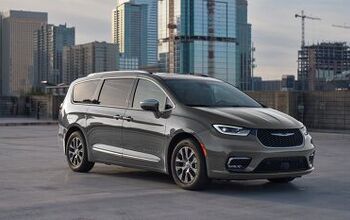


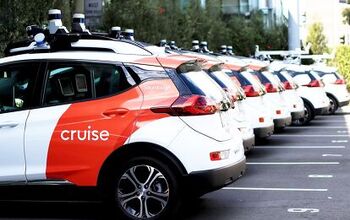





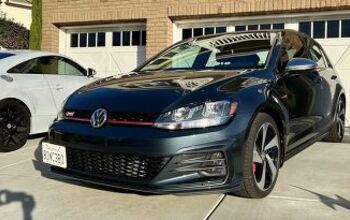
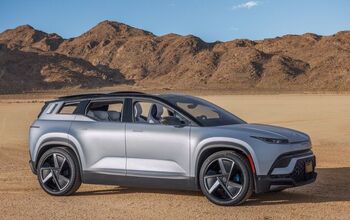
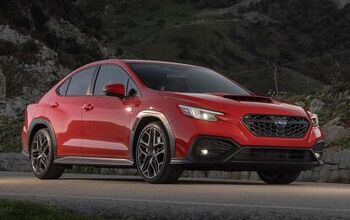
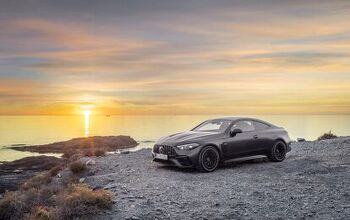

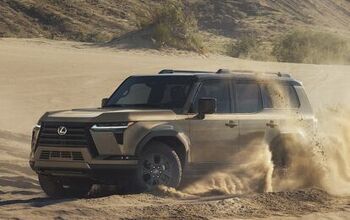
Comments
Join the conversation
The previous Dominant American V8 RWD Platform was the Ford Panther Platform, which survived its last 13 years almost exclusively on fleet sales, and the Dominant American V8 RWD Platform before that was the GM B Platform, which survived from the late 80's to 1996 on little more than fleet sales. See the trend? In recent decades, a V8 RWD sedan that is made by an American car company sells well to the public for a while, and after that, it spends another 10 years being sold mostly as a rental car or police car. The LX platform cars are popular with fleets, but they're still doing well with consumers. I'd say they've got at least 12 years left.
As long as there is a fan base for Marvel superheroes there will be American muscle cars.